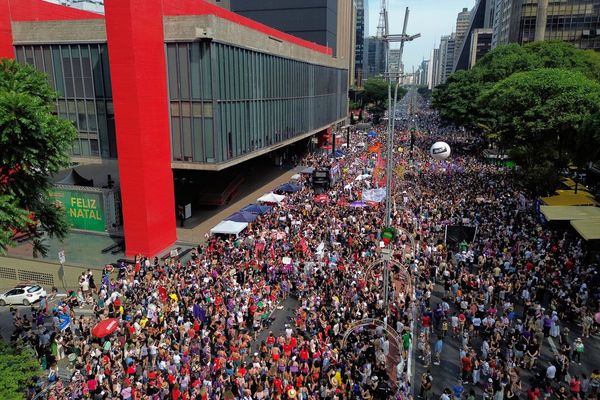
Every time you step into a store, you’re stepping into a carefully crafted environment designed to influence your behavior. Retailers have mastered the art of using psychology to make you buy more than you planned. From the layout of aisles to the music in the background, every detail is chosen with purpose. These tactics are subtle but effective, often convincing you that you’re making independent choices when you’re not. Knowing how retailers use mind tricks can help you shop smarter and keep more money in your pocket.
1. Store Layouts That Lead You Around
Retailers design store layouts to guide your path and increase how much you see—and buy. Fresh produce and colorful displays are often placed at the entrance to create a sense of freshness and abundance. Essentials like milk and bread are pushed to the back, forcing you to walk past tempting products along the way. Wide aisles in some areas and narrow ones in others subtly direct foot traffic where stores want it. This psychological manipulation encourages browsing, which often leads to impulse purchases.
2. Strategic Product Placement
Where products sit on shelves is never random. Eye-level spots are reserved for items that make retailers the most money, not necessarily the best deal for shoppers. Brands even pay extra for this premium space because it drives sales. Meanwhile, cheaper alternatives are often placed lower or higher, where you’re less likely to notice them. By manipulating shelf space, retailers influence which products end up in your cart.
3. The Power of Music and Scents
The background music and subtle scents in stores are carefully chosen to affect your mood. Slow, relaxing music encourages shoppers to take their time, leading to more purchases. In contrast, upbeat tunes in fast-food chains push you to eat quickly and move on. Scents like fresh bread or seasonal spices are pumped into the air to create emotional triggers. These sensory cues bypass logic and make you spend more without realizing it.
4. Price Tricks That Seem Like Bargains
Retailers use pricing strategies to make products appear cheaper than they are. Ending prices in .99 or .97 make an item look like a better deal because our brains focus on the left-most number. Signs showing “limit 2 per customer” create artificial scarcity, making shoppers buy more. Bundling items as “buy one, get one” convinces customers they’re saving when they might not need the extra. These price manipulations make spending feel like saving, which is the ultimate trick.
5. Shopping Cart Size Increases Spending
Over the years, retailers have steadily increased the size of shopping carts. A bigger cart creates a psychological urge to fill it, even if you didn’t plan to buy that much. Studies show that shoppers with larger carts purchase significantly more than those with smaller baskets. The empty space subtly convinces you that you’re not buying enough. What feels like convenience is actually a strategy to boost your bill.
6. Seasonal Displays and Limited-Time Offers
Retailers rely on urgency and scarcity to push shoppers into quick decisions. Seasonal displays, like holiday candy or back-to-school items, create the illusion that products are only available for a short time. “Limited-time offers” or “today only” sales trigger fear of missing out, a powerful psychological motivator. This manipulation often makes people buy things they wouldn’t normally consider. The tactic preys on emotion rather than logic, making it highly effective.
7. Free Samples That Aren’t Really Free
Free samples seem like a kind gesture, but they’re designed to spark instant buying decisions. When you try a sample, you feel a subconscious obligation to return the favor by purchasing the product. This principle of reciprocity is one of the oldest tricks in retail psychology. It works so well that entire aisles are sometimes dedicated to sampling. That “free” bite of cheese or sip of coffee is more profitable for the store than you think.
8. Checkout Aisle Temptations
The checkout aisle is the final stage of psychological manipulation. Small, inexpensive items like candy, gum, or magazines are placed there to catch you off guard. After making bigger spending decisions, shoppers are more likely to give in to impulse buys. These last-minute grabs add millions in profits for retailers each year. What seems like a harmless snack toss-in is actually a carefully planned revenue booster.
Outsmarting Retail Tricks Every Time You Shop
Retailers manipulate your mind in ways that are hard to spot, but awareness is your best defense. By understanding tactics like strategic layouts, pricing games, and sensory manipulation, you can shop with intention instead of emotion. Making a list, setting a budget, and sticking to essentials help cut through these psychological traps. The goal isn’t to stop shopping—it’s to shop smarter and avoid spending more than you need to. Once you recognize the tricks, you’ll see them everywhere—and resist them.
Have you noticed these mind games while shopping? Share which retail trick gets you the most in the comments—I’d love to hear your take.
What to Read Next
- Retail Reversals: 5 Times Stores Were Caught Repackaging Expired Meat
- What the Position of Food on Shelves Really Reveals About Retail Tricks
- 9 Barcode Tricks Retailers Use to Change Prices Without You Noticing
- 11 Ways Retailers Are Getting Around the New Labeling Laws
- Why Are More Retail Chains Pushing House Brands Over Trusted Labels?
The post The 8 Sneaky Ways Retailers Manipulate Your Mind appeared first on Grocery Coupon Guide.







